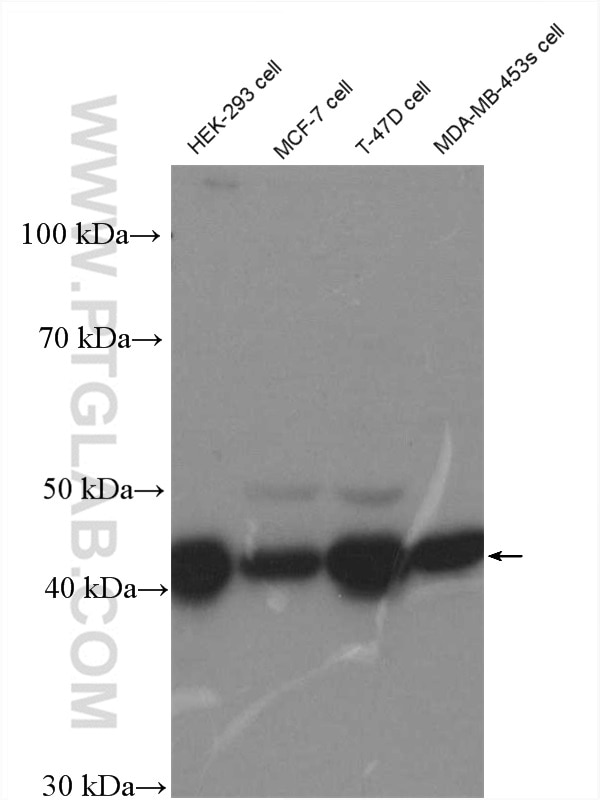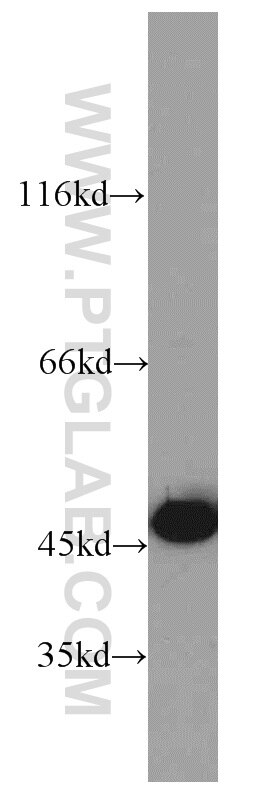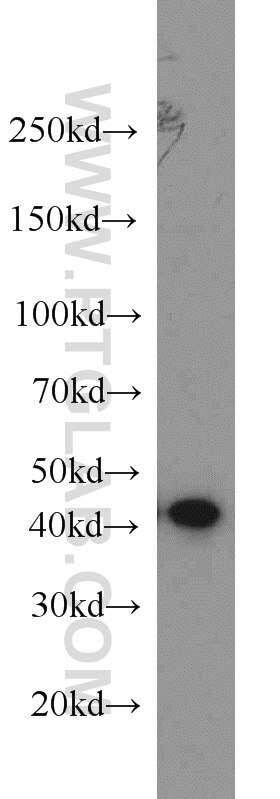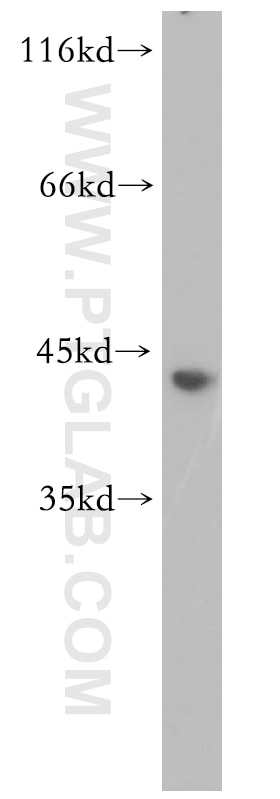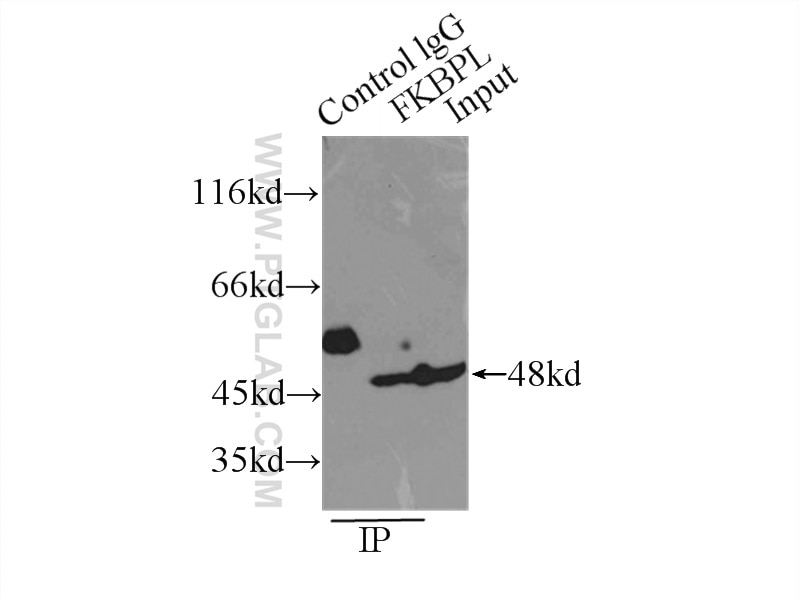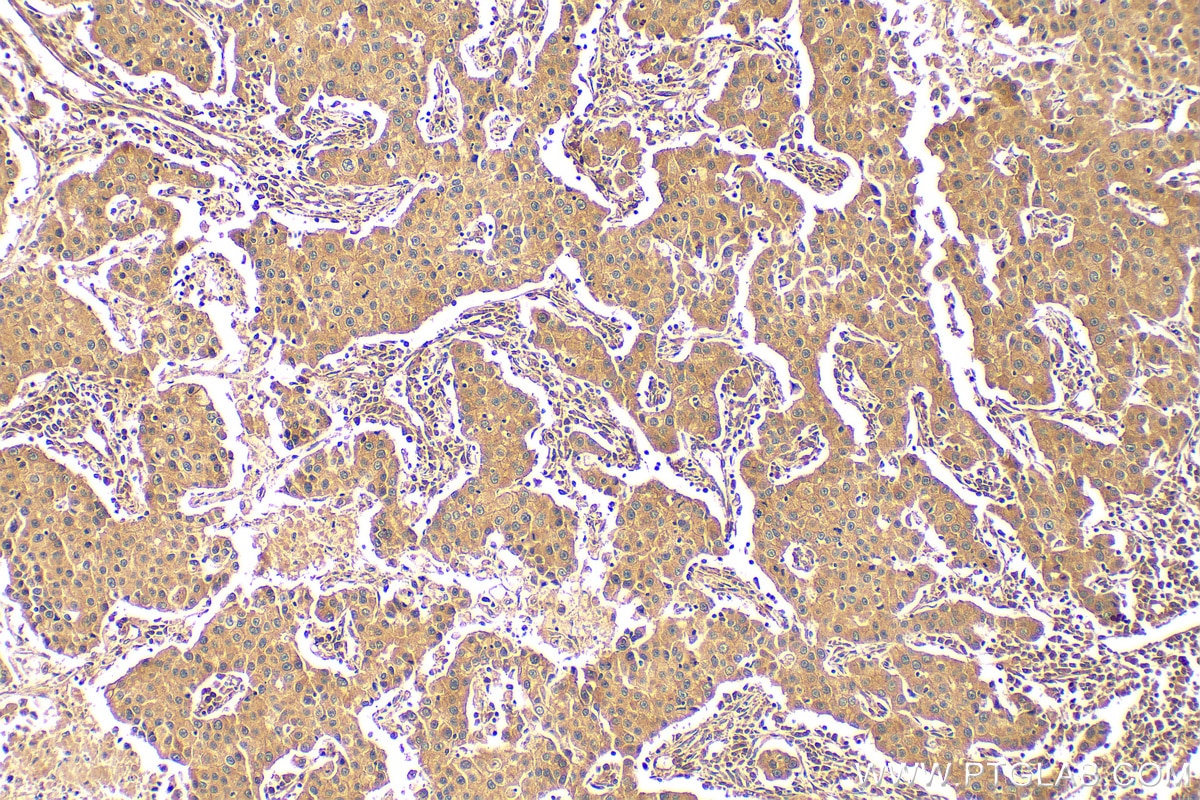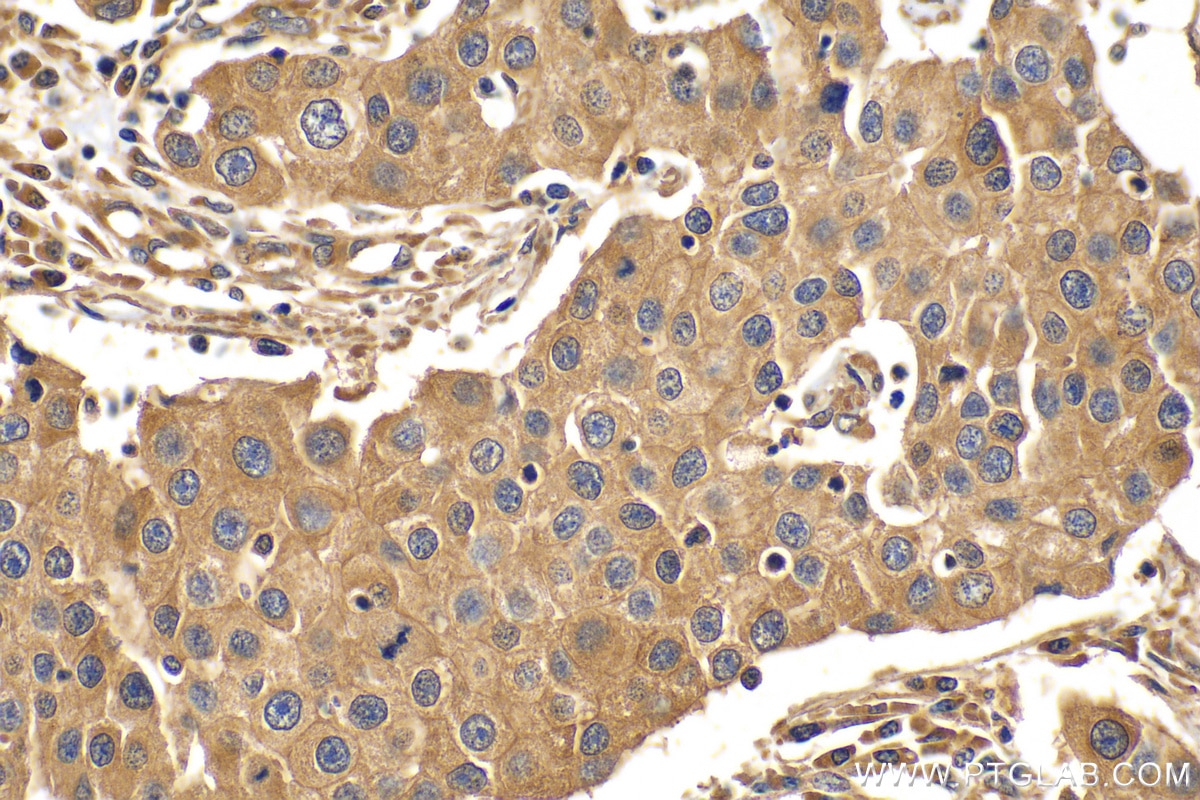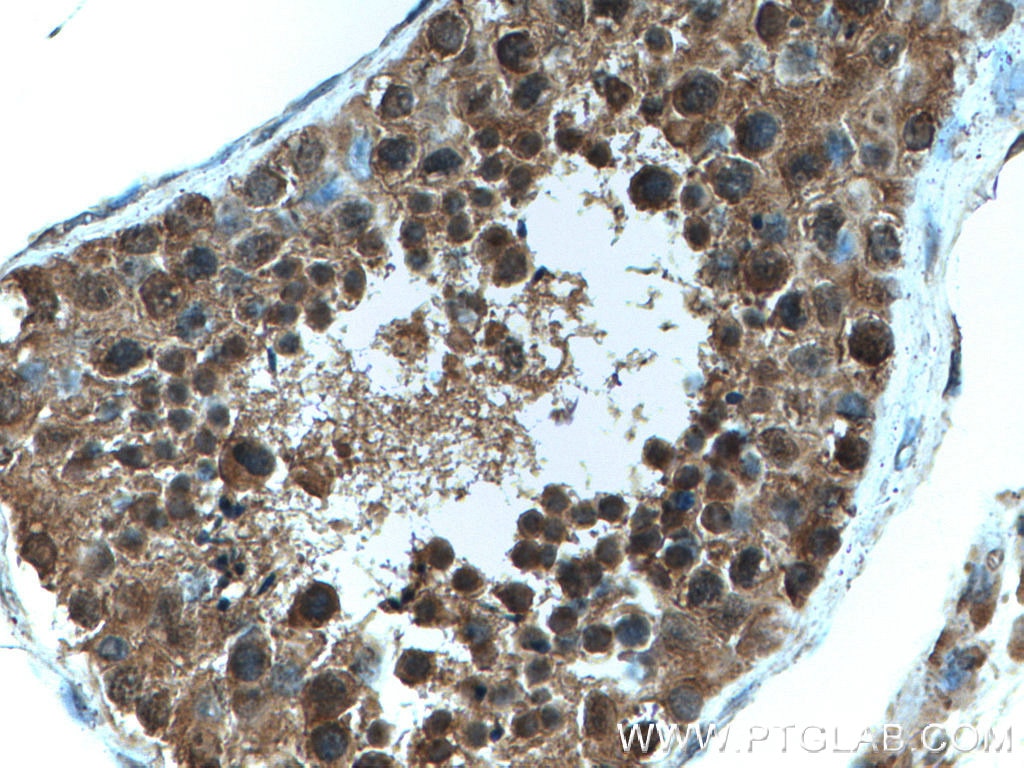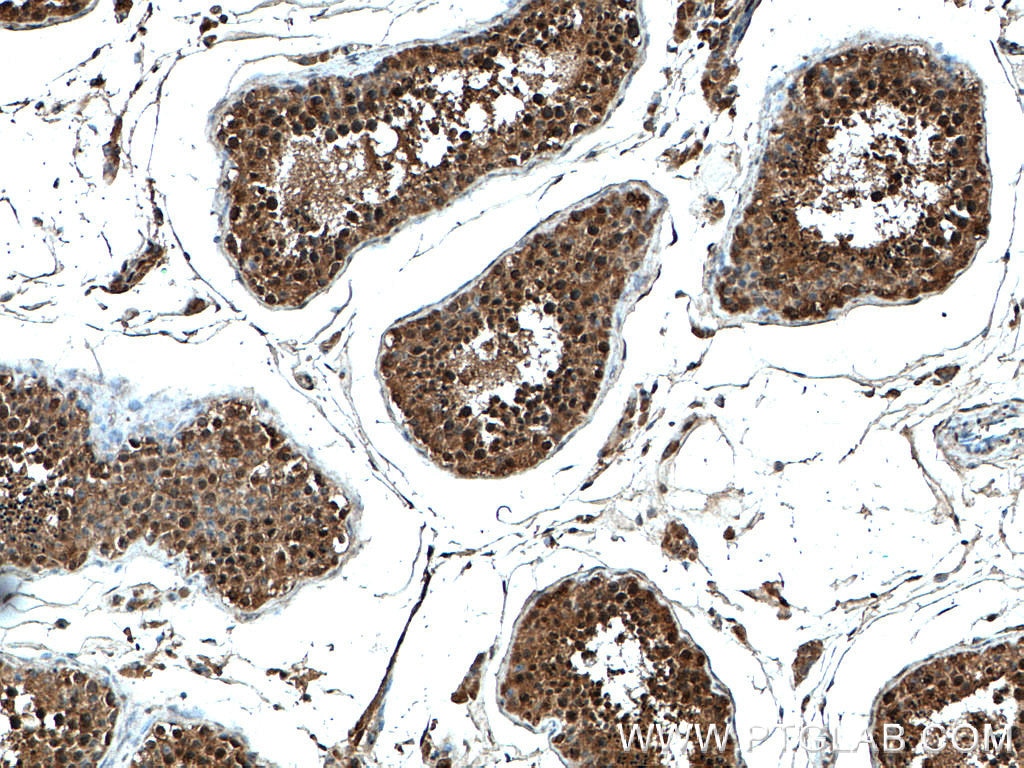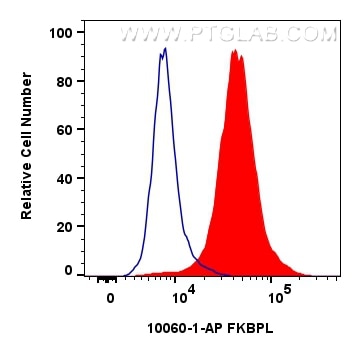- Phare
- Validé par KD/KO
Anticorps Polyclonal de lapin anti-FKBPL
FKBPL Polyclonal Antibody for WB, IHC, FC (Intra), IP, ELISA
Hôte / Isotype
Lapin / IgG
Réactivité testée
Humain et plus (2)
Applications
WB, IHC, IF, FC (Intra), IP, ChIP, ELISA
Conjugaison
Non conjugué
N° de cat : 10060-1-AP
Synonymes
Galerie de données de validation
Applications testées
| Résultats positifs en WB | cellules HEK-293, cellules HeLa, cellules Jurkat, cellules MCF-7, cellules MDA-MB-453s, cellules T-47D, tissu cérébral humain, tissu testiculaire humain |
| Résultats positifs en IP | cellules MCF-7 |
| Résultats positifs en IHC | tissu de cancer du sein humain, tissu testiculaire humain il est suggéré de démasquer l'antigène avec un tampon de TE buffer pH 9.0; (*) À défaut, 'le démasquage de l'antigène peut être 'effectué avec un tampon citrate pH 6,0. |
| Résultats positifs en FC (Intra) | cellules HeLa, |
Dilution recommandée
| Application | Dilution |
|---|---|
| Western Blot (WB) | WB : 1:1000-1:4000 |
| Immunoprécipitation (IP) | IP : 0.5-4.0 ug for 1.0-3.0 mg of total protein lysate |
| Immunohistochimie (IHC) | IHC : 1:300-1:1200 |
| Flow Cytometry (FC) (INTRA) | FC (INTRA) : 0.40 ug per 10^6 cells in a 100 µl suspension |
| It is recommended that this reagent should be titrated in each testing system to obtain optimal results. | |
| Sample-dependent, check data in validation data gallery | |
Applications publiées
| KD/KO | See 3 publications below |
| WB | See 20 publications below |
| IHC | See 7 publications below |
| IF | See 10 publications below |
| ChIP | See 1 publications below |
Informations sur le produit
10060-1-AP cible FKBPL dans les applications de WB, IHC, IF, FC (Intra), IP, ChIP, ELISA et montre une réactivité avec des échantillons Humain
| Réactivité | Humain |
| Réactivité citée | rat, Humain, souris |
| Hôte / Isotype | Lapin / IgG |
| Clonalité | Polyclonal |
| Type | Anticorps |
| Immunogène | FKBPL Protéine recombinante Ag0112 |
| Nom complet | FK506 binding protein like |
| Masse moléculaire calculée | 349 aa, 38 kDa |
| Poids moléculaire observé | 42-48 kDa |
| Numéro d’acquisition GenBank | BC004168 |
| Symbole du gène | FKBPL |
| Identification du gène (NCBI) | 63943 |
| Conjugaison | Non conjugué |
| Forme | Liquide |
| Méthode de purification | Purification par affinité contre l'antigène |
| Tampon de stockage | PBS with 0.02% sodium azide and 50% glycerol |
| Conditions de stockage | Stocker à -20°C. Stable pendant un an après l'expédition. L'aliquotage n'est pas nécessaire pour le stockage à -20oC Les 20ul contiennent 0,1% de BSA. |
Informations générales
FKBPL, also named as DIR1, NG7 and WISp39, has similarity to the immunophilin protein family, which plays a role in immunoregulation and basic cellular processes involving protein folding and trafficking. FKBPL levels may be a prognostic indicator and determinant of response to endocrine therapy(PMID:20103631, 15664193). It can be detected the band between 38 kDa and 48 kDa by western blot.
Protocole
| Product Specific Protocols | |
|---|---|
| WB protocol for FKBPL antibody 10060-1-AP | Download protocol |
| IHC protocol for FKBPL antibody 10060-1-AP | Download protocol |
| IP protocol for FKBPL antibody 10060-1-AP | Download protocol |
| Standard Protocols | |
|---|---|
| Click here to view our Standard Protocols |
Publications
| Species | Application | Title |
|---|---|---|
J Adv Res Hsa_circ_0001402 alleviates vascular neointimal hyperplasia through a miR-183-5p-dependent regulation of vascular smooth muscle cell proliferation, migration, and autophagy | ||
Cancer Res FKBPL regulates estrogen receptor signaling and determines response to endocrine therapy. | ||
Cell Mol Life Sci A placenta-on-a-chip model to determine the regulation of FKBPL and galectin-3 in preeclampsia | ||
J Control Release Delivery of RALA/siFKBPL nanoparticles via electrospun bilayer nanofibres: An innovative angiogenic therapy for wound repair.
| ||
Clin Cancer Res FKBPL and peptide derivatives: novel biological agents that inhibit angiogenesis by a CD44-dependent mechanism. | ||
Oncogene Identification of RBCK1 as a novel regulator of FKBPL: implications for tumor growth and response to tamoxifen. |
